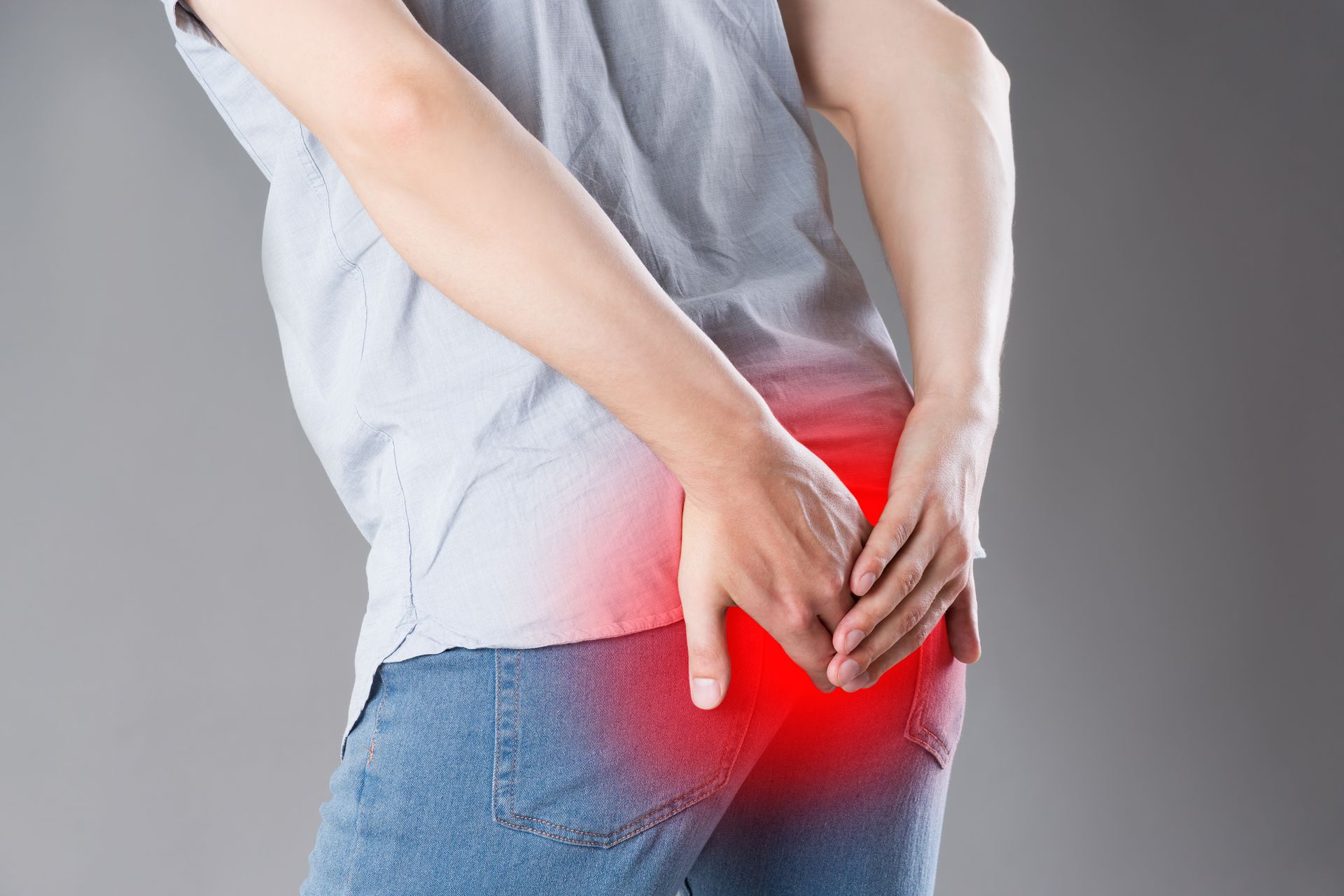Preparing for Pilonidal Surgery: Tips and Expectations
If you're facing a procedure for a pilonidal cyst, you might feel a mix of emotions. Getting ready for this journey is a big step toward lasting comfort and health. This guide is here to walk you through the process with friendly, practical advice.

Understanding what to expect can make a huge difference. Knowing the details helps you feel more confident and in control. We'll cover everything from your pre-operative appointment to your recovery at home.
For expert care, consider Pilonidal Fix. It's the only practice in the Northeastern US dedicated solely to treating pilonidal disease. They offer the highest cure rates in the region.
Leading the team is Dr. Rafailov, a New Jersey specialist known for his compassion and honesty. He provides comprehensive treatment focused on your lasting recovery. You can reach his practice at www.pilofix.com or by phone at 973-323-2400.
Key Takeaways
- Proper preparation can significantly improve your surgical experience and recovery.
- The procedure typically takes about an hour, with most patients going home the same day.
- Recovery time varies, but avoiding strenuous activity is key to healing.
- Pilonidal Fix is the only dedicated practice in the Northeastern US for this condition.
- Dr. Rafailov is known for direct communication and a commitment to patient care.
- This guide provides essential information to help you feel ready and informed.
Understanding Pilonidal Disease and Surgical Options
Pilonidal disease is a unique skin condition that develops in the crease at the top of the buttocks. This area, called the natal cleft, is where the problem begins.
What is Pilonidal Disease?
Loose hairs can penetrate the skin or collect in small pits within the natal cleft. These hairs carry bacteria, leading to inflammation and a painful infection.
This process often creates a pilonidal cyst. Many people have no symptoms at first. But once an abscess forms or a draining tunnel develops, the discomfort usually requires medical treatment.
Benefits of Surgery and Alternative Treatments
Surgical removal is the most dependable solution. It offers the highest success rate for eliminating the sinus and infected tissue completely.
Other options can provide temporary relief. These include daily washing, hair removal methods, antibiotics, or minor procedures to drain an abscess.
Comparing Pilonidal Cyst Treatment Paths
| Treatment Approach | Primary Goal | Long-Term Effectiveness |
|---|---|---|
| Surgical Procedure | Complete removal of the cyst and sinus tracts | High - aims for a permanent cure |
| Conservative Management (e.g., antibiotics, hair removal) | Manage symptoms and prevent flare-ups | Variable - often addresses symptoms, not the root cause |
| Minimally Invasive Procedures (e.g., drainage) | Relieve acute pain from an abscess | Low - high chance of the problem returning |
While non-surgical methods have a place, they may not prevent recurrence. Understanding your options helps you and your doctor choose the best path for lasting health.
Preparing for Pilonidal Surgery: Pre-Op Appointments and Consultations
Meeting with your medical team before the operation helps build confidence and clarity. This consultation is your chance to establish a strong partnership with your healthcare provider. Open communication ensures you receive all necessary information.
Key Questions to Ask Your Surgeon
Come prepared with questions for your surgeon. This discussion helps you understand what to expect. Ask about the specific technique planned for your procedure.
Inquire about success rates and potential complications. Understanding the recovery timeline is crucial. Specialized experience with this condition can impact outcomes significantly.
Reviewing Medication, Supplements, and Health History
Complete transparency about your medications is essential. Share all prescriptions, vitamins, and supplements with your surgeon. Some substances can increase bleeding risk during surgery.
Patients taking blood thinners may need to adjust their regimen. A thorough health history review helps identify potential risk factors. Chronic conditions like diabetes require special consideration.
Medication Considerations Before Surgery
| Medication Type | Pre-Surgery Action | Potential Risk |
|---|---|---|
| Blood Thinners | May need temporary discontinuation | Increased bleeding during procedure |
| Anti-inflammatory Drugs | Discuss timing with your surgeon | Interaction with anesthesia |
| Herbal Supplements | Full disclosure required | Unpredictable reactions |
Dr. Rafailov's team at Pilonidal Fix prioritizes direct communication. They ensure patients feel fully informed and supported throughout the process. This comprehensive approach leads to safer surgical outcomes.
What to Bring to Your Surgical Appointment
Organizing your essentials for the surgical day helps everything run smoothly. Having the right items on hand reduces stress and allows you to focus on your health. This checklist ensures you have all the necessary information and supplies.
Essential Documents and Identification
Your first stop at the hospital or surgery center will be check-in. Have your government-issued photo ID and insurance cards ready. Bring any completed pre-operative forms and a list of your current medications.
This information helps the staff provide the best possible care. It also saves valuable time when you arrive.
Personal Comfort Items
Think about your comfort after the procedure. Pack loose-fitting clothing that is easy to put on. Avoid anything with a tight waistband that might press on the surgical area.
Slip-on shoes are a great idea. You might also want a book or tablet for any waiting time. A small pillow can make the car ride home much more comfortable.
Your Surgical Day Checklist
| Category | Essential Items | Important Notes |
|---|---|---|
| Paperwork | Photo ID, Insurance Card, Medication List | Speeds up the admission process |
| Transportation | Arranged Driver | Required due to anesthesia; you cannot drive |
| Clothing | Loose Pants, Soft Shirt, Slip-on Shoes | Prevents irritation and makes dressing easy |
| Leave at Home | Jewelry, Piercings, Contact Lenses | Prevents potential complications during the procedure |
Remember, a trusted friend or family member can provide great support. They can listen to post-operative care instructions and assist you. The team at your care facility will guide you through each step, ensuring a safe experience.
Essential Pre-Surgery Health Preparation
Getting your body ready in the weeks before your procedure can significantly impact your healing journey. This is your opportunity to optimize your physical condition and reduce potential .
Lifestyle Adjustments and Weight Management
If you smoke, consider reducing or stopping in the coming . Tobacco use can interfere with wound healing and increase infection . Even cutting back gradually helps your body prepare.
Maintaining a healthy weight supports better outcomes. Being significantly overweight may increase surgical , while being underweight can slow recovery. Gentle exercise and balanced nutrition in the before your procedure build strength.
Importance of Vaccination and Full Body Check-Ups
Discuss vaccinations with your healthcare team. Updated immunizations help protect you during the vulnerable recovery period when your immune system may be compromised.
A comprehensive screening identifies any underlying conditions that need management. This is especially important if you have issues like high pressure or diabetes. Proper hand washing and following hospital protocols also reduce infection .
Every has unique needs. Taking these steps demonstrates self-care and commitment to achieving the best possible outcome for your long-term.
Day of Surgery: What to Expect
The morning of your procedure marks the final step in your preparation journey. Knowing what will happen helps ease nerves and ensures everything goes smoothly. This guide walks you through the entire day from start to finish.
Pre-Operative Instructions and Hygiene Guidelines
Follow your fasting instructions exactly as given. Typically, this means no food or drink after midnight. Your surgery could be postponed if these rules aren't followed for safety reasons.
Take any approved medications with just a small sip of water. Shower using the special soap your doctor provided. Avoid all lotions, perfumes, and nail polish.
Do not shave the surgical area yourself. The medical team will handle any necessary hair removal properly to prevent irritation.
Surgical Process and Anesthesia Information
When you arrive, you'll check in and change into a gown. The surgical team will meet with you and mark the operation site. This is standard safety protocol.
You'll then meet your anesthesia provider. They'll discuss keeping you comfortable during the procedure. Most pilonidal surgeries use general anesthesia, meaning you'll be asleep.
The operation itself typically takes 30-60 minutes. Your surgeon will carefully remove the sinus and infected tissue. The entire team focuses on your safety and comfort throughout the process.
Afterward, you'll wake up in recovery where staff monitors you closely. Once you're stable, you'll be cleared to go home with your designated driver.
Post-Surgery Recovery and Follow-Up Care
Effective post-operative care is crucial for achieving complete recovery. Most people go home the same day, just hours after their procedure. The team at Pilonidal Fix provides comprehensive support throughout this important phase.
Immediate Post-Operative Care and Pain Management
Your surgical site will have either stitches or gauze packing. Some discomfort is normal after the tissue removal. Your doctor will prescribe medication to manage any pain.
Follow wound care instructions carefully. Keep the area clean and change dressings as directed. Watch for signs of infection like increased redness or swelling.
Typical Recovery Timeline
| Time Period | Activity Level | Care Requirements |
|---|---|---|
| First Few Days | Light activities only | Rest, pain management, wound care |
| 1-2 Weeks | Return to desk work | Continue dressing changes, avoid sitting long periods |
| 3+ Weeks | Full activity resumption | Gradual return to exercise, maintain hair-free area |
Long-Term Healing and Activity Resumption
Most people return to work within 2-3 weeks. Avoid strenuous exercise and prolonged sitting during early healing. Use a donut cushion for comfort when seated.
Sleep on your stomach or side to reduce pressure. Wear loose clothing that doesn't rub against the surgical area. Excellent hygiene helps prevent complications.
"Complete healing takes time, but following your care plan leads to the best outcomes."
Potential complications include minor bleeding or slow healing. Contact your provider if concerns arise. Scars will fade over time, providing lasting relief from chronic discomfort.
Pilonidal Fix offers regular follow-up appointments to monitor your progress. Their commitment ensures each patient receives personalized support throughout recovery.
Conclusion
When dealing with persistent pilonidal concerns, finding the right specialist makes all the difference. This comprehensive guide has walked you through understanding the condition, treatment options, and recovery process.
Proper preparation significantly improves outcomes. Honest communication with your surgeon and commitment to aftercare are essential. While any medical procedure carries risks, expert care dramatically reduces complications.
Pilonidal Fix stands alone as the only practice in the Northeastern US dedicated solely to this condition. Dr. Rafailov combines exceptional skill with genuine compassion.
Don't let pain control your life. Take the first step toward lasting relief by contacting Pilonidal Fix today at
973-323-2400 or visiting
www.pilofix.com. Expert help is available, and complete recovery is within reach.
About Pilonidal Fix
Dr. Samuil Rafailov, FACS, is a triple board-certified surgeon and a diplomate of both the American Board of Cosmetic Surgery and the American Board of Facial Cosmetic Surgery. After completing general surgery training and a cosmetic surgery fellowship, he shifted his practice in 2022 to focus extensively on advanced pilonidal disease treatment. As a medical director at Pilonidal Fix, Dr. Rafailov has helped patients from across the Northeast find lasting relief through effective, modern surgical techniques.
Frequently Asked Questions About Preparing for Pilonidal Surgery
What is a pilonidal cyst?
A pilonidal cyst is a small sac or pocket that forms in the skin near the top of the buttocks. It often contains hair and skin debris. This condition can cause pain, swelling, and sometimes infection.
What are the main benefits of having surgery for this issue?
The primary benefit of a pilonidal procedure is the removal of the cyst and the infected tissue. This helps eliminate pain and greatly reduces the risk of the problem coming back. Surgery aims for a permanent solution.
What should I discuss with my healthcare provider before the procedure?
It's important to talk about your full health history, including any medications and supplements you take. Ask about the surgeon's experience, the specific technique they will use, and the potential risks and complications.
How can I prepare my body in the weeks leading up to the operation?
Good preparation involves healthy lifestyle adjustments. This includes managing your weight, quitting smoking, and ensuring you are up-to-date on vaccinations. A full body check-up helps ensure you are in the best possible health for a smooth recovery.
What happens on the actual day of the surgery?
You will receive specific pre-operative instructions, like fasting guidelines. At the hospital, you'll check in, meet with the anesthesia team, and prepare for the procedure. The surgical team will ensure you are comfortable and informed every step of the way.
What is the recovery process like after the operation?
Recovery involves immediate post-operative care to manage pain and prevent infection. Long-term healing requires keeping the area clean, avoiding pressure on the buttocks, and gradually resuming normal activities over several weeks. Follow-up appointments are crucial.
Are there any significant risks associated with this type of surgery?
As with any medical procedure, there are some risks. These can include bleeding, infection, or the cyst returning. However, choosing an experienced surgeon and carefully following all aftercare instructions significantly lowers these risks.





